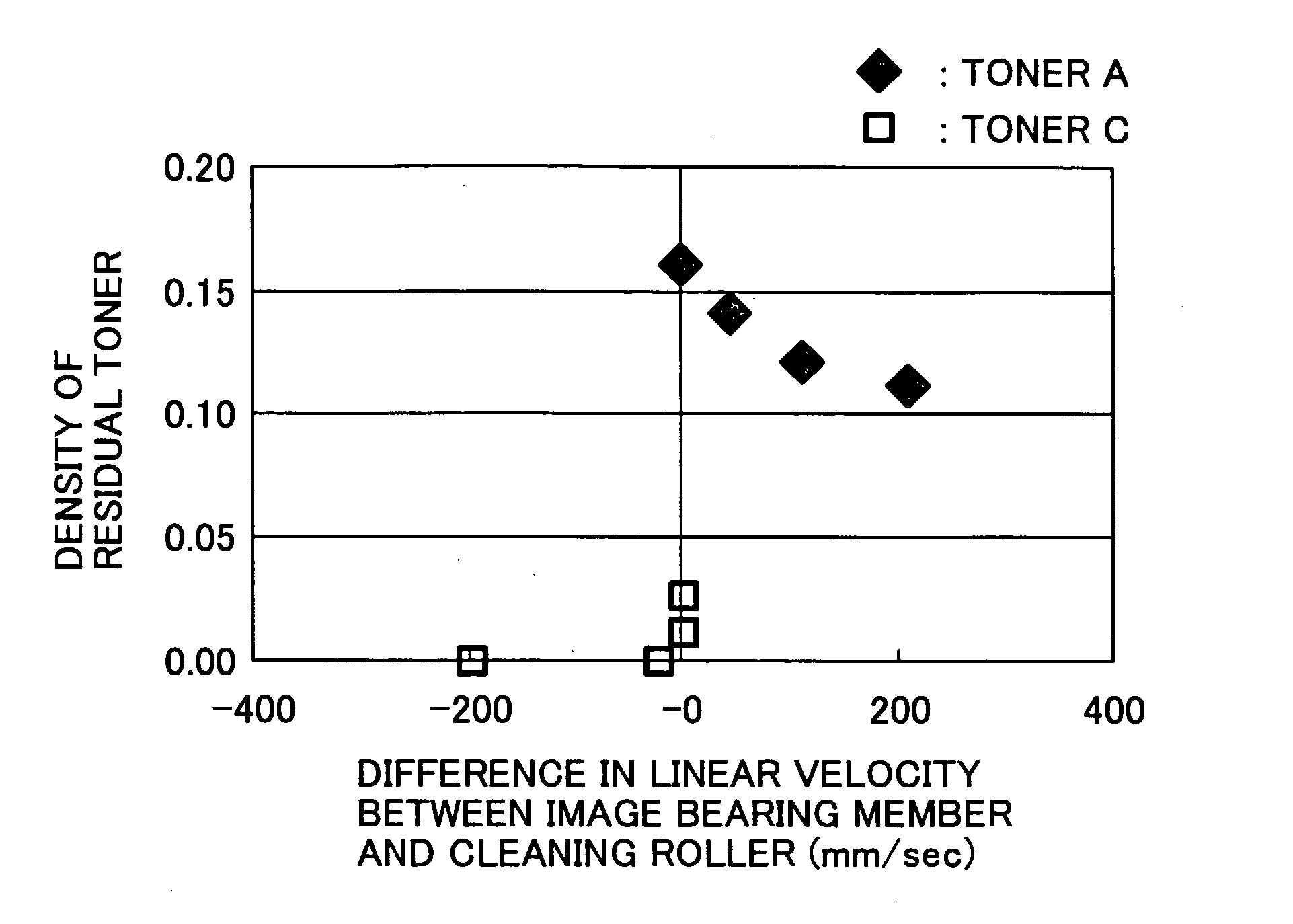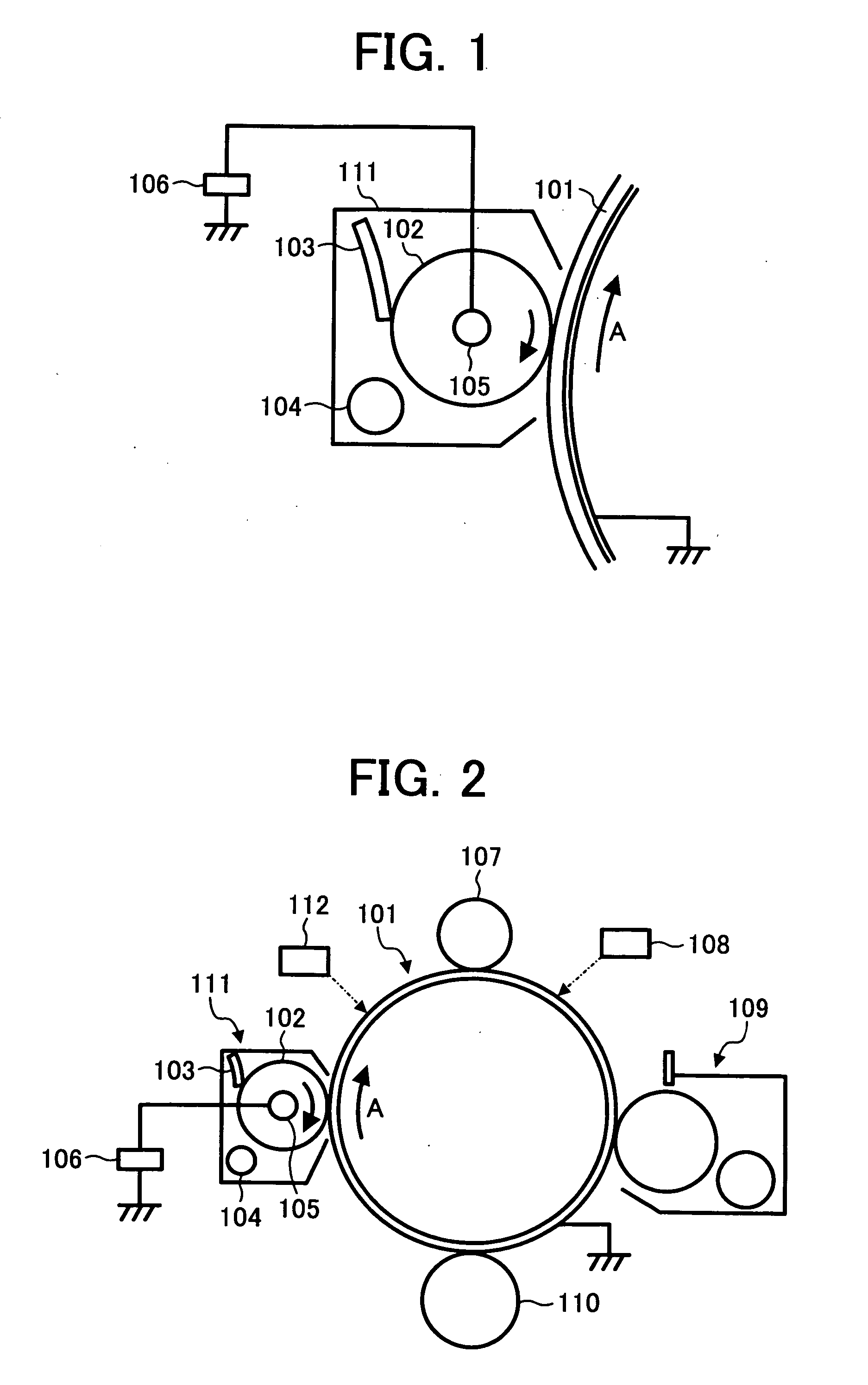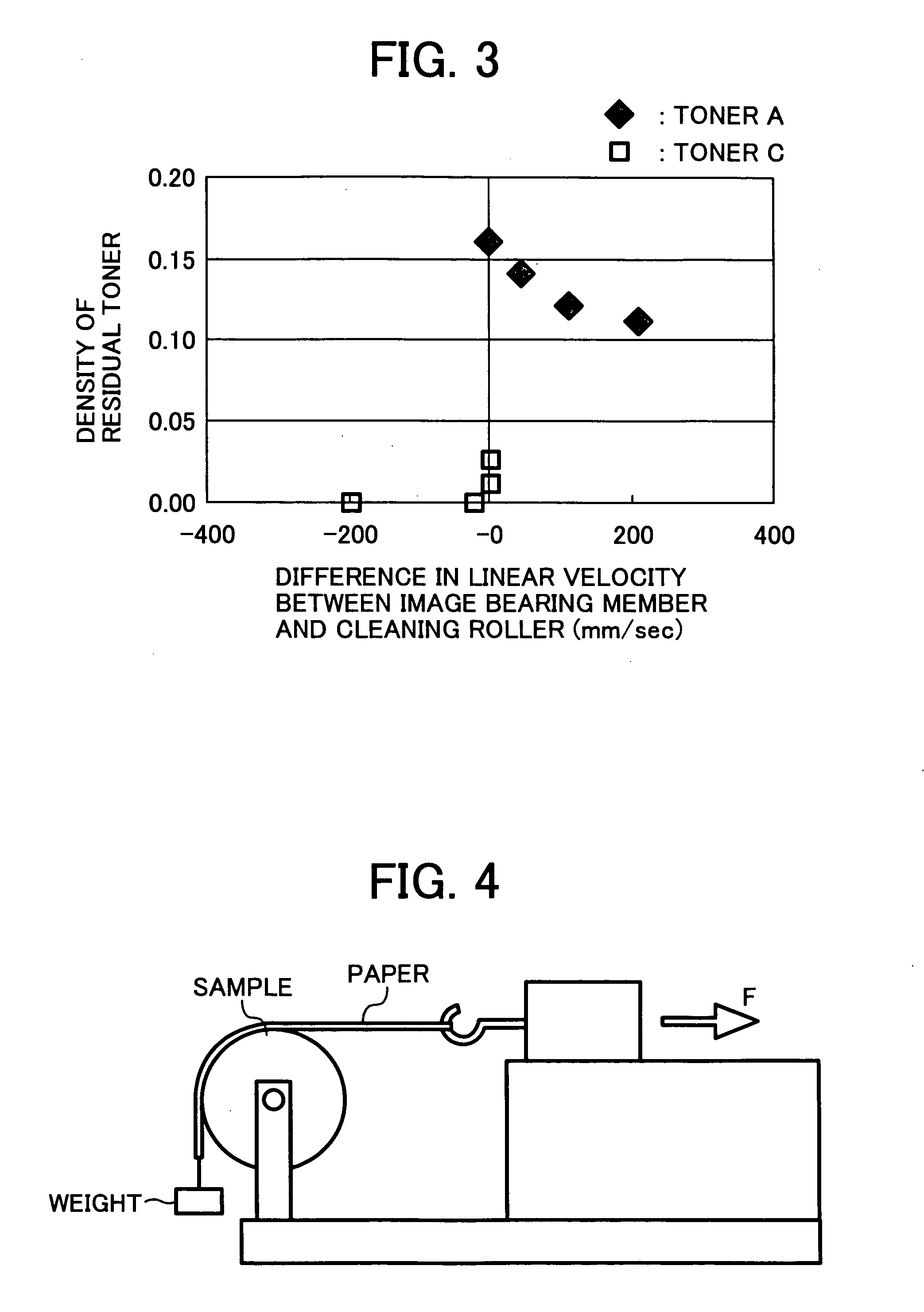Image forming method, and image forming apparatus and process cartridge using the image forming method
a technology of image forming and process cartridge, which is applied in the field of image forming method, can solve the problems of deterioration of image quality, serious reduction of surface resistivity of photosensitive layer, and relatively low mechanical and chemical durability of organic photoreceptors, and achieve good abrasion resistance and scratch resistance
- Summary
- Abstract
- Description
- Claims
- Application Information
AI Technical Summary
Benefits of technology
Problems solved by technology
Method used
Image
Examples
first embodiment
[0441]FIG. 1 is a schematic view illustrating a cleaning device for use in the image forming apparatus of the present invention.
[0442] The photoreceptor prepared above is used as an image bearing member 101. As illustrated in FIG. 1, a cleaning device 111 includes a cleaning member 102, a scraper blade 103 and a feeding coil 104. The cleaning member 102 includes a metal shaft 105, and an electroconductive elastic layer which is formed on the metal shaft 105 and which is made of, for example, a molded electroconductive rubber layer and has a rubber hardness of from 15 to 80° and a volume resistivity of from 105 to 1015 Ω·cm. In addition, a tube or a layer which is made of an electroconductive fluorine-containing resin having a volume resistivity of from 106 to 1016 Ω·cm can be overlaid on the elastic layer.
[0443] The cleaning member 102 is pressed toward the surface of the image bearing member 101 by a pressing member (not shown) at a pressure of from 300 to 700 gf. In addition, th...
second embodiment
[0487]FIG. 6 is a schematic view illustrating another embodiment of the cleaning device for use in the image forming apparatus of the present invention. The photoreceptor (1) is used as the image bearing member 601.
[0488] Toner particles 615 remaining on an image bearing member 601 are clockwise fed and are removed from the surface of the image bearing member by a brush roller 616. Toner particles adhered to the brush roller and remaining thereon without being removed from the brush roller are knocked-off by a bias roller 617. In this case, the bias roller may be rotated or fixed. The toner particles released from the brush roller 616 or the bias roller 617 are collected by a collection roller 619 provided in a cleaning unit 618 to be fed to a developing tank and to be reused. Alternatively, in order to stabilize the image forming system, the collected toner particles may be fed to a waste toner bottle to be disposed of.
[0489] When the residual toner particles have a charge, a bia...
third embodiment
[0492] In the toner image transfer process, by applying a high voltage, a toner image on the image bearing member is electrostatically transferred to a receiving material or an intermediate transfer medium which is typically used for forming a full color image. In this case, a discharging phenomenon may be caused between the image bearing member and the electrode applying the transfer bias, thereby causing a problem in that the polarity of toner particles having a small amount of charge or toner particles having an abnormal charge is reversed. Therefore, a problem in that the residual toner includes toner particles with a negative charge and toner particles with a positive charge occurs. The toner particles in this state are illustrated in FIG. 27.
[0493] In order to avoid such a problem (i.e., in order to uniformize the polarity of the residual toner), charging is performed before the cleaning process. Since a high voltage is directly applied to the image bearing member in this cha...
PUM
| Property | Measurement | Unit |
|---|---|---|
| thickness | aaaaa | aaaaa |
| volume average particle diameter | aaaaa | aaaaa |
| thickness | aaaaa | aaaaa |
Abstract
Description
Claims
Application Information
 Login to view more
Login to view more - R&D Engineer
- R&D Manager
- IP Professional
- Industry Leading Data Capabilities
- Powerful AI technology
- Patent DNA Extraction
Browse by: Latest US Patents, China's latest patents, Technical Efficacy Thesaurus, Application Domain, Technology Topic.
© 2024 PatSnap. All rights reserved.Legal|Privacy policy|Modern Slavery Act Transparency Statement|Sitemap



